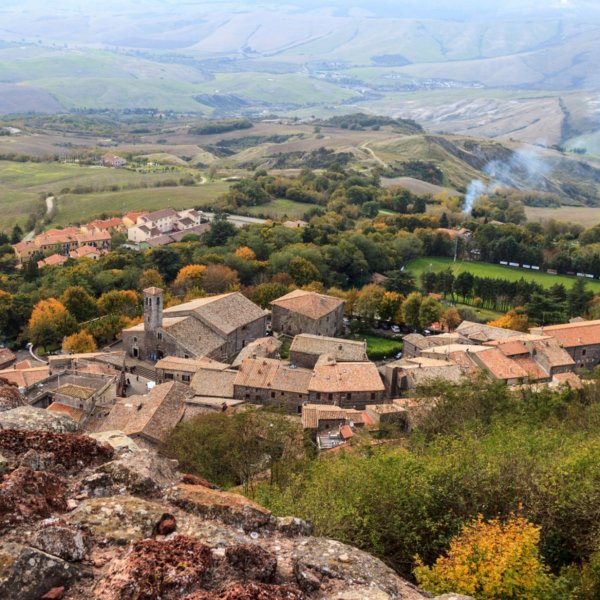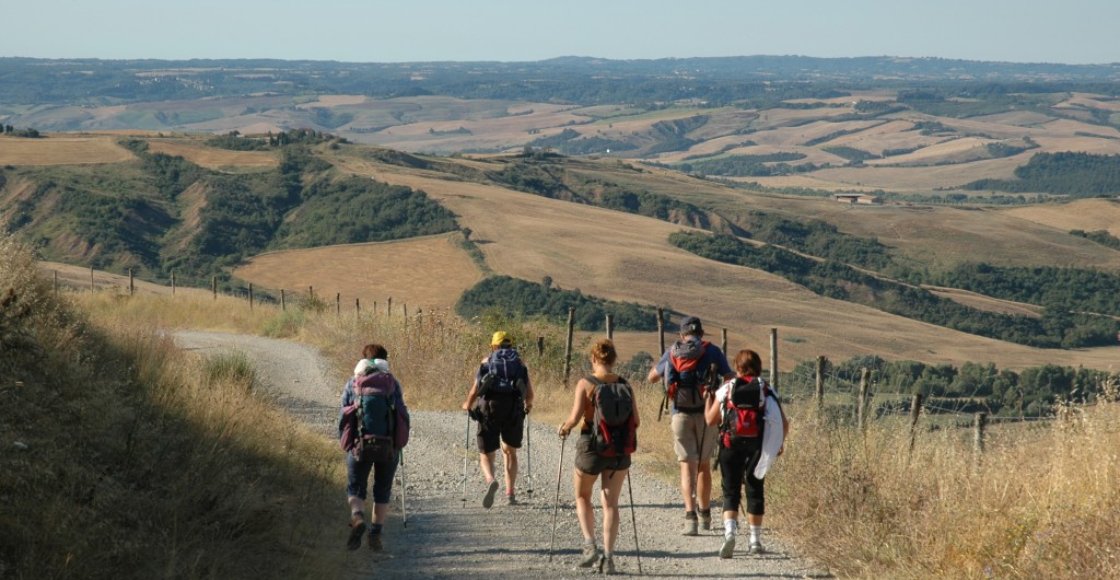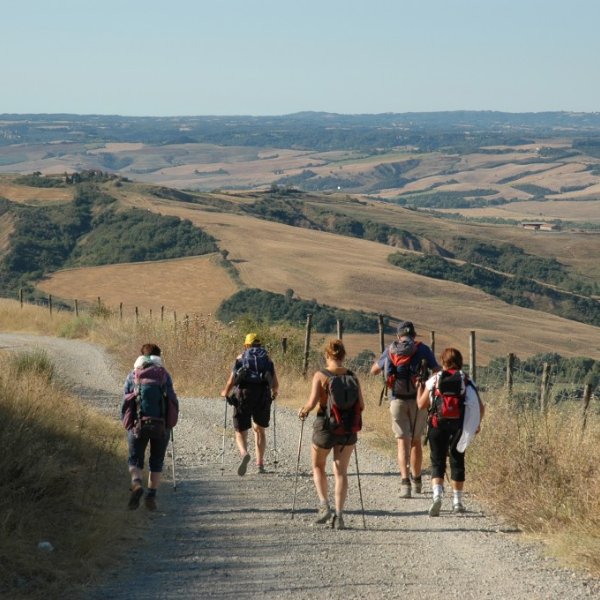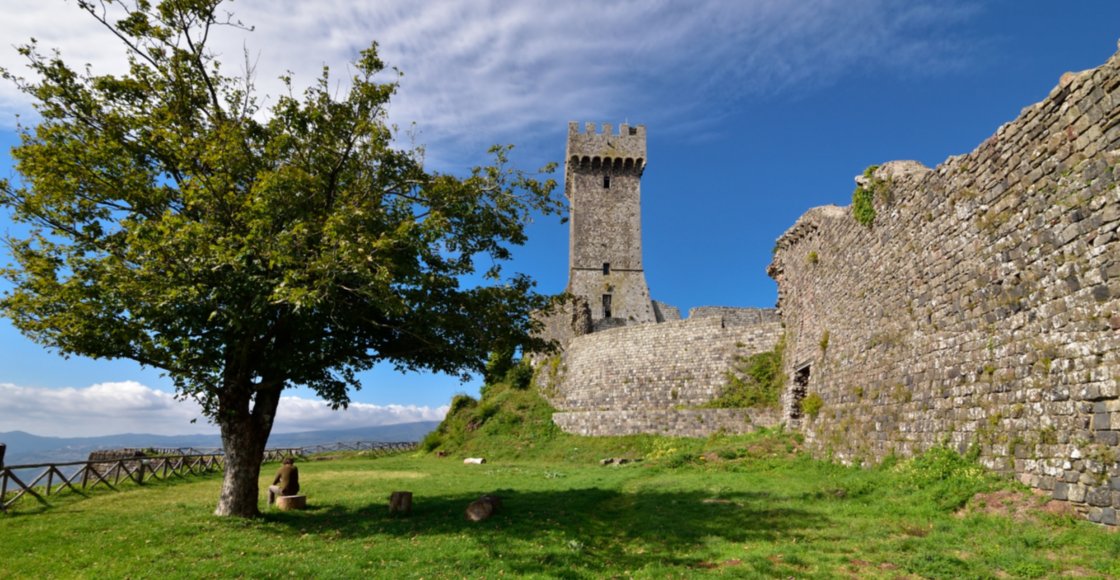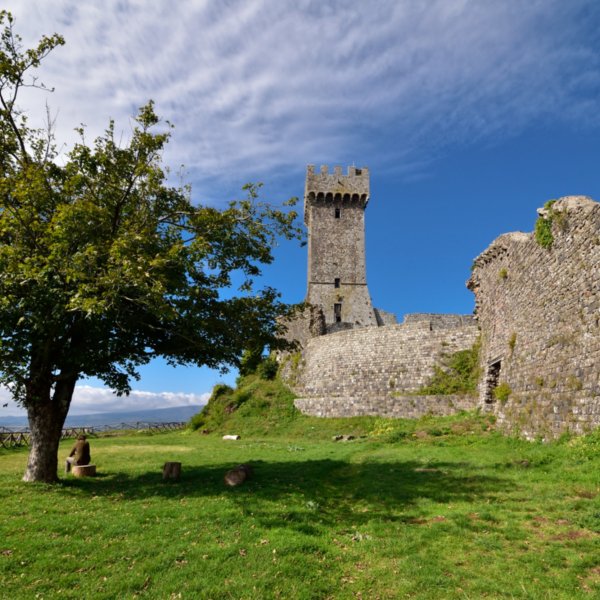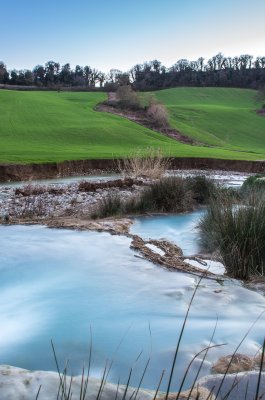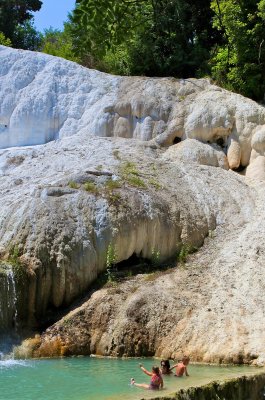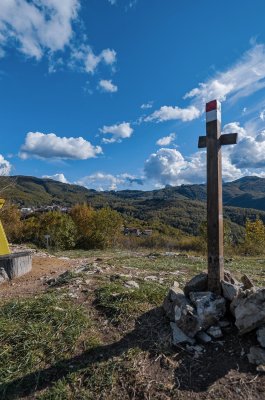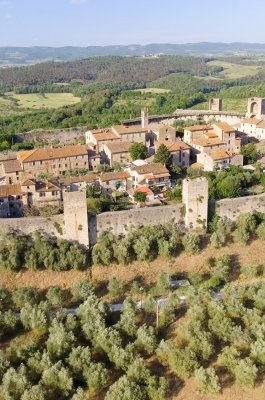A challenging stage stretching 20.5 miles or 33 kilometers among the spectacular views and picturesque hills of the Val d’Orcia. The path alternates between dirt roads and paved sections, including ascents, descents and fords. After the fortified village of Vignoni Alto, descend to Bagno Vignoni, famous for its thermal baths in the historic piazza. The short detour to Castiglione d’Orcia, which is well worth a visit, affords sweeping views of the valley, with the Rocca di Tentennano dominating the landscape.
Continue through the valleys of the Orcia and Paglia rivers, encountering the old abandoned Le Briccole hospital and some fords to be approached with caution. The ford before the hospital can prove challenging if there have been heavy downpours, as can the ford of the Formone stream near the junction to Radicofani, but this one can be avoided by following the provincial road and returning to the itinerary after crossing the bridge.
Then enter the Amiata lands, passing near Bagni San Filippo, with its hot springs nestled in the woods. The last stretch is a long, strenuous climb to Radicofani, dominated by the fortress of the same name that was once the refuge of Ghino di Tacco, the gentleman brigand.
Water supplies and refreshments are available in Bagno Vignoni, Gallina (about 1640 feet or 500 meters off the track) and at the Agriturismo Podere San Giorgio.



























